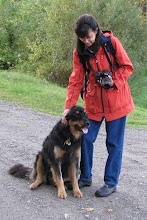How's this for a "baby"?!
(This photo was taken this morning.)
A Cooper's hawk goes from hatching to flying in about four weeks and I am astonished with the changes I have witnessed in this short period of time.
I estimate that about 4 1/2 weeks have passed since the four eggs hatched and two days ago I saw one of the "baby" hawks flying. The nest is in a tall, mature Acacia tree that is one of many trees growing in a row alongside a fence. The young bird flew out of one tree, made a fairly large horizontal arc and landed in another tree about three trees over. I have seen several other short flights and one was a bit surprising to the hawk as it landed on a window ledge. After taking several seconds to get its bearings, it turned around and flew off.
They exercise their wings like this one is doing (above) and this activity is called "branching". They also call out in a similar way to the parents but with softer voices. :-)
Related captions are below each image. (You can click on a photo to enlarge it).
Taken on July 10th.
Taken on July 13th. You can see a big change in just three days!
Also taken on July 13th.
Taken on July 15th.
Taken on July 18th. The bird has taken on a more mature, majestic look to my mind.
Taken on July 19th.
Taken on July 19th.
Taken on July 19th.
A young hawk is on a branch above the parent who is on the nest. You can see the comparable sizes!
A few very short videos follow. In the second to last one you will hear the cries of a parent about to arrive and the subsequent cries and commotion of the young hawks as they realize that food is coming.













































